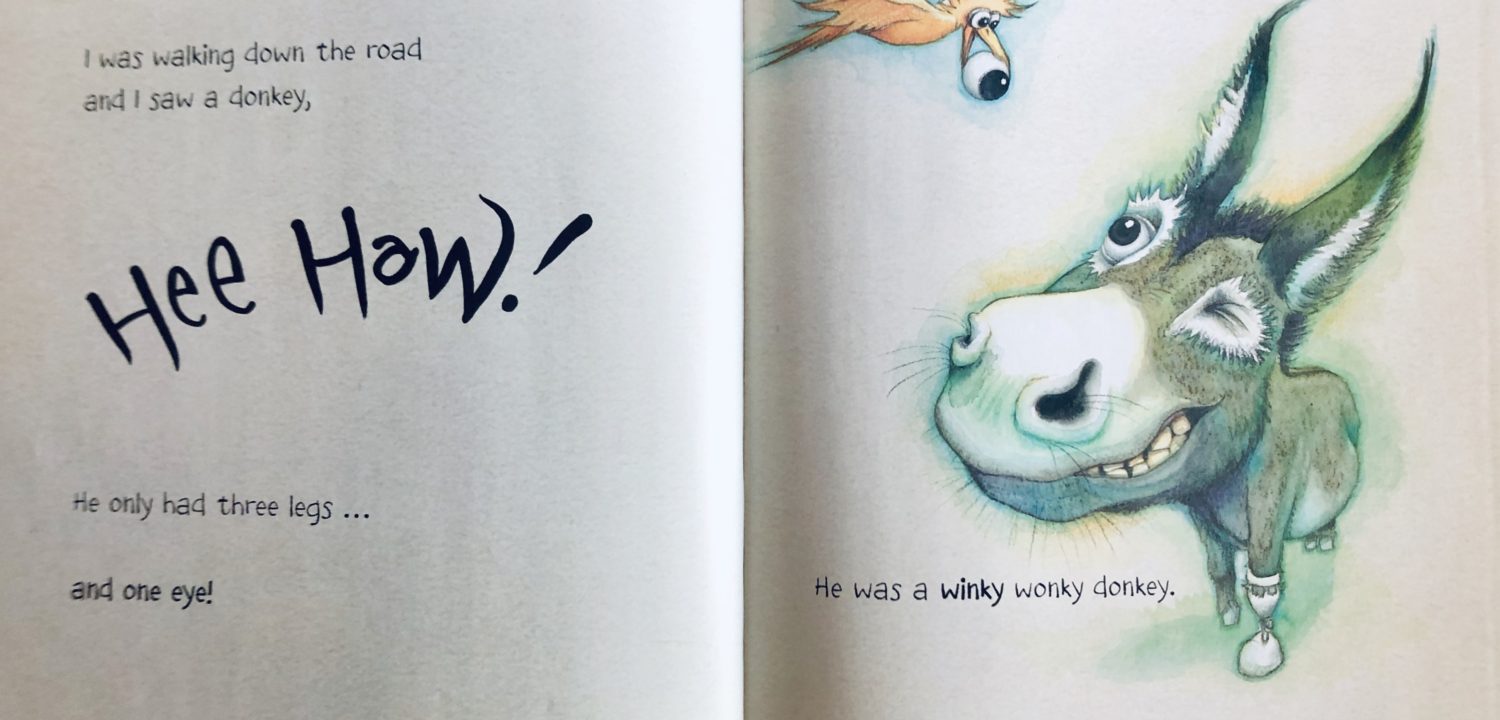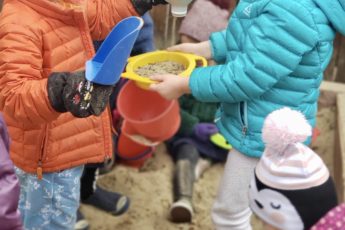What’s wrong with “The Wonky Donkey?”
Evidently there is a controversy surrounding the popular children’s book The Wonky Donkey as it relates to a song about golliwogs. When I first read the book, I wasn’t aware of the racist implications of the text, nor the origins of golliwogs.
I can, however, write to my initial reaction to the popular children’s book. After reading The Wonky Donkey, I am shocked this book has received such high acclaim.
What appears to be missing from the conversation are the implications for those with differing abilities and the biased messages we are sending young children.
The insinuation is that people who wear prosthetics are somehow “wonky.” Let’s examine some dictionary definitions of wonky: “crooked, off-centered, askew, faulty, defective, and unreliable.”

The inherit message is that a person (in this case a donkey) with a prosthetic is faulty and defective. While it’s a convenient rhyme and a fun song, there are clearly less ableist alternatives available.
It’s likely that many young children have not encountered someone wearing a prosthetic. And for many children, this one exposure to a differing ability is that it is “wonky.”
Children’s literature is incredibly powerful. Books and stories serve as windows into lives and worlds they may not be exposed to on a daily basis. Literature serves to create allies of understanding and acceptance.
My goal as an educator is to implement an Antibias Education (ABE) – one of the ABE goals is for children to “learn accurate information, appropriate to their developmental stage, about disabilities and special needs” (Derman-Sparks, 2010, p. 126). Another ABE goal is for all children to learn how to “challenge name calling and stereotyping with respect to their own or other’s abilities” (Derman-Sparks, 2010, p. 126).
The information children are learning from The Wonky Donkey is grossly inaccurate. Moreover, it leads to name-calling and stereotyping.
Consider these stereotypes of people who are differently-abled in children’s literature from the Guidelines for Selecting Bias-Free Textbooks and Storybooks:
- Village “idiot”
- “Peg-leg” or “hook-arm”
- Happy “moron”
- One-eyed pirate

While the donkey in the story is not portrayed as a pirate, he easily fits into these other ableist caricatures of people with disabilities. In addition, his one eye earns him the label of “winky donkey.”
Books like The Wonky Donkey serve to foster pre-prejudice in young children – these are “beginning ideas and feelings in very young children that may develop into real prejudice if reinforced by societal biases. It may be based on young children’s limited experience and developmental level, or it may consist of imitations of adult behavior” (Derman-Sparks, 2010, p. xiii).
This book is doing nothing more than reinforcing societal biases by preying upon children’s limited world experiences.
What can we do?
As parents and educators, we must be incredibly intentional about the perspectives we share with young people. I encourage you to rethink sharing The Wonky Donkey with young children. If it’s available in your child’s classroom, reach out and express your concern. We must:
- “Regularly read children’s books that honestly depict children and adults with various disabilities” (Derman-Sparks, 2010, p. 131).
- “Choose books and pictures that show people as whole, competent human beings and that address both their disabilities and their abilities” (Derman-Sparks, 2010, p. 132).
As adults we simply must do better; we can do better. Our children are counting on us.

Some book lists to help us out:
Little Parachutes ~ Children’s Picture Books About Disabilities
Raising Luminaries: Books for Littles ~ Influential Kids Books Featuring Capable Disabled Characters
Simply Special Ed ~ Picture Books About Children with Different Abilities
References
Derman-Sparks, L., & the A.B.C. Task Force. (1989). Anti-bias curriculum: Tools for empowering young children. Washington, D.C.: NAEYC.
Derman-Sparks, L. & Edwards, J. O. (2010). Anti-Bias education for young children and ourselves. Washington, D.C.: NAEYC.
Guidelines for selecting bias-free textbooks and storybooks. (1980). Council on Interracial Books for Children.




